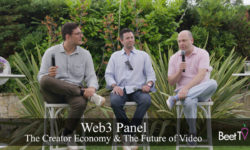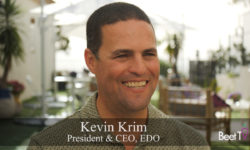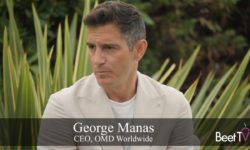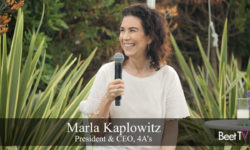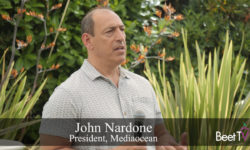CANNES – The media industry has been through a couple of years in which ad buyers swerved away from news media for fear troubling stories would put off audiences.
By and large, industry education efforts have succeeded in telling the story that such an impact is not necessarily true.
In this video interview with Beet.TV, Tony Marlow, chief marketing officer at one company that has done so much of the educating, explains how context really works.
Good adjacency
There’s a common misconception on the safety side that someone like, say, an auto manufacturer might want to avoid news stories about, say, car crashes,” says Marlow of Integral Ad Science (IAS). “However, it’s not that simple.
“If your auto ad is about the stereo in your car, sure, that might not be a good adjacency. But if you’re talking about advanced pedestrian safety features, suddenly that kind of context actually becomes very relevant.
“So having that granular understanding of the context and being able to act on it by finding those adjacencies can actually help supercharge the creative messaging, can help you tailor the creative messaging to the surrounding environment.”
Buying context
All of which, then, raises the question – how can an ad buyer actively seek out the right kinds of adjacencies, the right kinds of context?
Companies like IAS make software for “contextual targeting” and brand safety. When plugged into other ad systems, it can analyze and understand content opportunities, describing them with descriptive metadata made available in buying systems.
In fact, IAS, which raised $270 million from an IPO in 2021, this year acquired a French company called Context, which also offers digital content classification.
You are watching “Contextual Advertising Emerging: Now Key in Driving Performance”, a Beet.TV Leadership Summit at Cannes Lions 2022, presented by Integral Ad Science.
For more videos from this series, please visit this page.
Beet.TV is an official partner of Cannes Lions.






